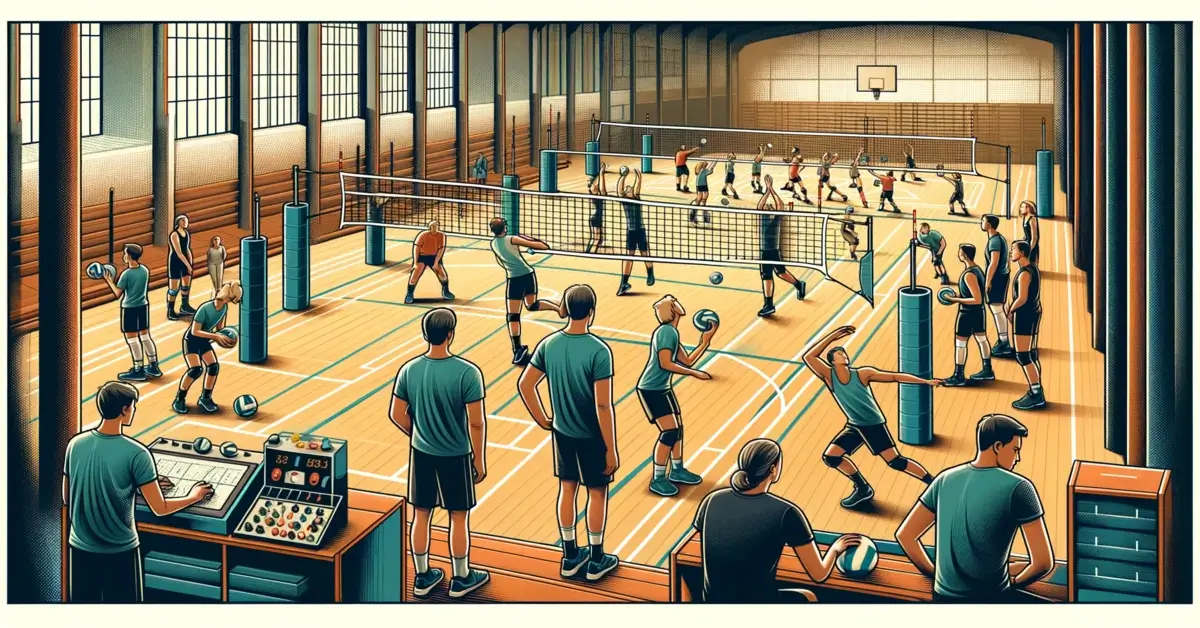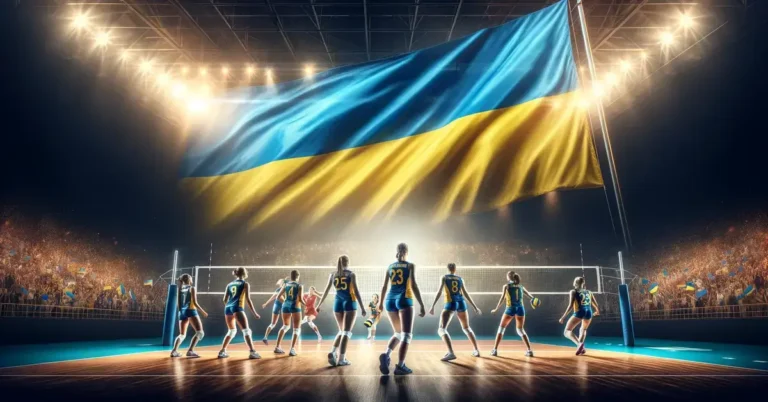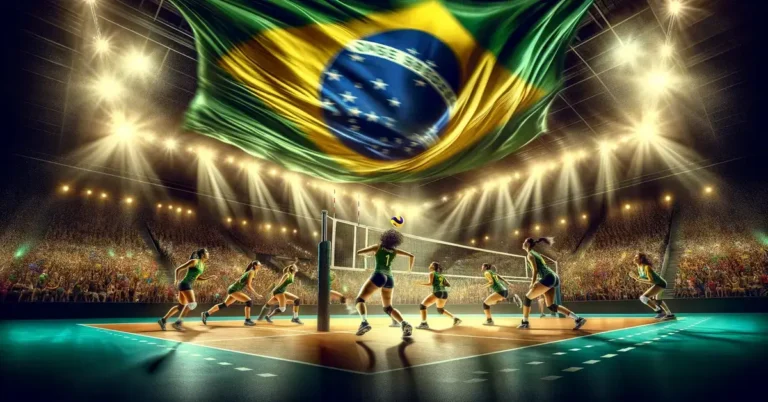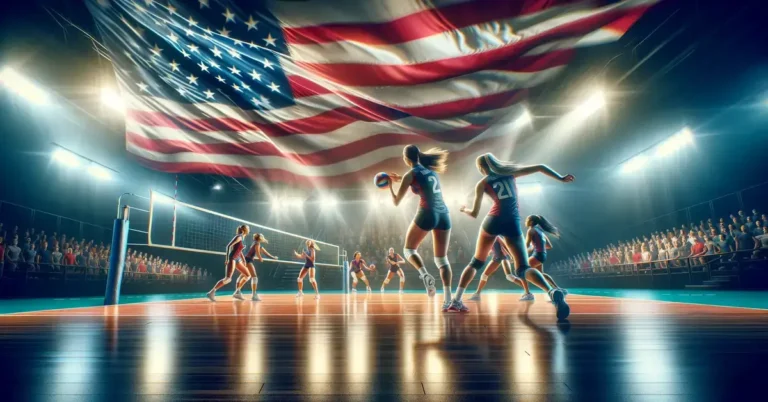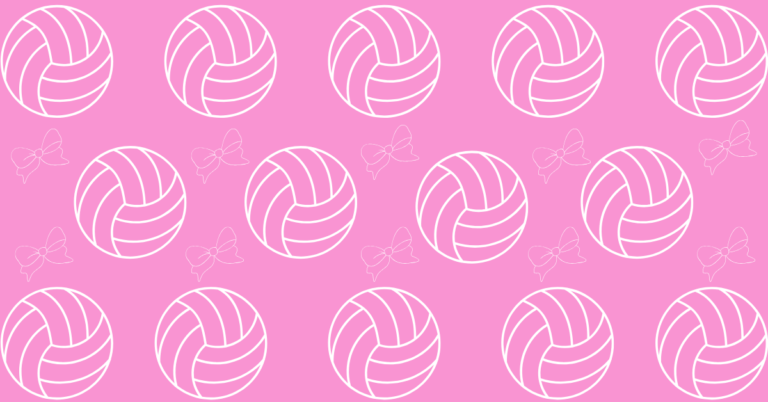As we prepare for volleyball season, understanding the best volleyball tryout drills is crucial for assessing players effectively. With numerous young athletes bustling through the gym, we aim not only to discover the budding talent but also to manage the large turnout efficiently. The right drills can highlight each player’s strengths and areas for growth, helping us build a well-rounded team.
However, it’s important to acknowledge that certain drills may not accurately reflect game pressure or player adaptability. Extensive serve-receive exercises, for example, might not entirely capture a player’s ability to communicate and adapt under the dynamic conditions of an actual match.
Essential Skills Assessment for volleyball tryout drills
When crafting volleyball tryout drills, assessing fundamental skills is paramount to assembling a competitive team. We examine each player’s technical prowess and how it aligns with game-play situations, always looking for that blend of agility, accuracy, and form which distinguishes the proficient from the novice.
Serve and Serve-Receive
The serve is the game’s opening gesture, and serve-receive its immediate counter. Serving volleyball tryout drills focus on consistency and placement of the serve, while also evaluating players’ quickness to transition to a defensive stance. Serve-receive drills, on the other hand, test passing accuracy and communication, essential for setting up an effective attack.

Passing Proficiency
A players’ passing mechanics are the crux of their ball-handling skills. We place athletes in game-like drills where their ability to maintain form under pressure can be observed. Passing drills are designed to assess the precision and quickness of a player’s bump, ensuring it’s on target to the setter.
Setting Skills
A savvy setter is the quarterback of volleyball, turning passes into potential points. Our setting volleyball tryout drills test the player’s setting ability, focusing on hand form and ball placement. Athletes are challenged to deliver balls at various tempos and trajectories, simulating an array of in-game scenarios.

Hitting and Attacking
Here we gauge a player’s approach and swing through hitting and attacking volleyball tryout drills. We seek out those with the prowess to execute plays—they must demonstrate powerful and targeted hitting. Players are also observed for their strategic shot selection, adjusting their attack based on the defense they face.

Blocking and Defense
Blocking and defense volleyball tryout drills are not just about height and reach; they’re about timing and intuition. The evaluation process here looks at an athlete’s blocking ability and defensive agility—critical for shutting down opponents’ attacks. Players are engaged in drills that challenge their reflexes and ability to read incoming hits.

By carefully observing these skills during volleyball tryout drills, we aim to assemble a team where every player is well-versed in the nuances of the game. We avoid drills that don’t authentically simulate match conditions, as they can give a misleading evaluation of a player’s abilities in actual competition.
Physical Conditioning and Agility
When approaching volleyball tryout drills, we focus on honing the physical conditioning and agility that’s pivotal in a sport demanding quickness and power. Our drills are aimed at preparing players for the rapid directional changes and explosive movements needed on the court.
Footwork Fundamentals
Footwork serves as the foundation for all movements in volleyball. Good footwork enhances our quickness along the net and improves our ability to move to the ball efficiently. Here’s a practical drill:
- Shuttle Runs: Improve lateral movement by setting up a series of cones and having players sprint to each cone and back, emphasizing aggressive pivots and swift transitions.
Here is one example out of many variations you can setup a shuttle run.
Jump and Power
Jumping ability is critical in volleyball for both attacking and defending. We aim to build explosive power, which is essential for spiking and blocking.
- Plyometric Drills: Include box jumps and squat jumps, alternating intensity to maximize power while avoiding burnout or injury over time.
Quickness and Movement
For a volleyball player, quickness and fluid movement can be the difference between making or missing a crucial play. We train to be both agile and quick, ready for anything the game throws at us.
- Agility Ladder Drills: Enhance quick reactions with high-knee drills, in-and-out steps, and lateral shuffles, building a skill set that morphs a lateral type defender into an all-around agile player.
Team Dynamics and Gameplay
As we explore volleyball tryout drills, it’s crucial to assess how players handle game-play situations and interact as part of a team dynamic. These drills not only gauge individual skills but also how well players communicate, their timing, and their ability to adapt to game-like scenarios.
Communication and Teamwork
Communication is the glue that keeps a volleyball team together, especially during high-pressure games. We often utilize volleyball tryout drills that simulate real match conditions to observe how players call for the ball, provide coverage, and make decisions on the fly. For instance, a 6 v 6 wave variation drill allows us to see how individuals maintain momentum while constantly rotating and engaging with different team members. This can also highlight any weaknesses in swing mechanics or relative heights during gameplay, which are critical when considering players for various positions.
- Drill 1: 6 v 6 Wave – Assess communication as players rotate after every ball touch.
- Drill 2: Targeted Feedback – Instruct players to verbalize intentions before action.
Game-Like Scenarios
Incorporating volleyball tryout drills that echo the intensity of a real match is essential in evaluating player compatibility and the mental parts of blocking. We look for drills where players demonstrate their game mentality, reacting swiftly to the evolving game and utilizing proper setting techniques under pressure. Drills from resources like TeamGenius emphasize the importance of replicating game-like situations to assess timing and the effectiveness of players in different positions.
- Drill 3: Timed Set-Piece – Tests setting accuracy and player anticipation under a countdown.
- Drill 4: Positional Play – Places players in their preferred roles to evaluate gameplay efficacy.
By focusing on these areas during tryouts, we can build a cohesive team ready to face any challenge on the court.
Volleyball Tryout Drills for Large Groups
When we’re running volleyball tryout drills for large groups, efficient use of court space becomes crucial. We aim to keep every athlete engaged, quickly assess individual skills, and foster a competitive environment. Let’s dive into specific drills designed to manage a large cohort effectively.
Ball-Handling Circuits
Passing Triplets: Organize players into groups of three for a circuit that focuses on passing. Each group has one ball and continuously rotates positions—passer, target setter, and server or tosser. This constant motion ensures active participation and hones precision under pressure.
Setting Shuttle: In this drill, lines of setters take turns tossing a ball to a target and then quickly shuffle to the next position. It’s perfect for improving agility and accuracy, especially when there are limited nets available.
Rotational Practices
2-Sided Serving-Passing Drill: We run a dynamic drill that puts servers and passers on both sides of the net, effectively doubling engagement. Players serve to opposing passers, who then must execute a controlled pass to a target area or setter.
Hitting Line vs. Blockers and Defense: We pit hitters against a line of blockers and defenders to simulate game-like scenarios. Blockers and defenders rotate after each attack to ensure everyone participates. This covers hitting, blocking, and defensive movements while keeping a large group moving.
Through these drills, we may encounter the challenge of players having less individual focus, which may lead to inconsistencies in form and technique. However, the goal is to create a training session that sieges the chance to see many players while also giving them ample touch on the balls. With coach-initiated serves or thrown balls, we can increase the pace of the drill, ensuring that the practice stays high-energy and effective.
Effective Coaching Strategies
When we conduct volleyball tryout drills, we understand the necessity of balancing scrutiny with efficiency. The right planning and execution of tryouts not only shape the season’s start but also set the tone for how we manage our team. It’s about making every minute count and evaluating players effectively to construct a winning roster.

Tryout Planning and Execution
Preparation is Key: The practice plan must be well-structured to maximize time. Coaches break down tryouts into segments, each focusing on specific skills such as serving, passing, attacking, and defense. It’s essential to plan for regular intervals to allow both coaches and athletes to take breathers and to discuss observations. It’s good to maintain a high-energy environment by running an up-tempo practice, keeping athletes engaged and moving.
Execution That Evaluates: Tryouts are a critical time to assess not only skills but also players’ attitudes and how they communicate with each other. For this, the serving team and receiving team switch roles periodically, ensuring fair evaluation. Coaches must be on the lookout for players who take initiative and show leadership—attributes that can’t be gauged through drills alone.
Player Evaluation Methods
Assessing the Individual: While performing group drills to gauge team dynamics, individual assessment remains paramount. By utilizing four-on-four passing drills, you can closely observe each player’s passing mechanics and adaptability. Not all volleyball tryout drills are created equally; some may not truly showcase an athlete’s capabilities, especially under the stress of tryouts.
Making Decisions: In the end, selection priorities guide the decisions. It’s not just about who is the tallest or strongest, but who fits the team’s needs. This could mean prioritizing a player who demonstrates exceptional ball control over a more aggressive attacker. Most volleyball tryout drills are tailored to reveal these nuances, ensuring the choices contribute to a balanced and cohesive roster.
Special Considerations for Youth
When approaching volleyball tryout drills for youth, particularly those at the middle school or junior high level, it’s crucial to tailor them to varying development levels and maintain a positive atmosphere. It needs to be taken care of that these young athletes are not only prepared technically but also enjoy their time on the court, fostering a long-lasting love for the game.

Adapting Drills for Development Levels
At the younger age groups, it’s imperative that the volleyball tryout drills are chosen for regular training sessions acknowledge the diverse range of skills and physical development. For example, pepper drills can be modified to suit the abilities of each player. We might have a high school team where the ball control is more advanced, allowing for quicker exchanges, while middle school athletes may need a slower pace to successfully execute the drill.
- For less experienced players: Use softer volleyballs or reduce the distance between partners.
- For more experienced players: Introduce variations such as setting after a pass or including hits from the back row.
In all cases, the focus should be on reinforcing the fundamentals through fun volleyball drills that engage youth at their level.
Encouraging Positive Attitudes
Psychology plays a significant role in the development of young athletes. Stressing the importance of encouragement, teamwork, and resilience can often have a more lasting impact than the technical aspects of volleyball.
- 🚀 Always provide constructive feedback, focusing on what they did well and where there’s room for improvement.
- 🚀 Turn mistakes into teachable moments, and never single out a player negatively.
Regular praise, when earned, can bolster a young athlete’s confidence and enthusiasm for the game, contributing to their ongoing commitment and success. The use of positive reinforcement aligns with recommendations from authoritative resources like Livestrong.com, which emphasize the benefits of a supportive approach in youth sports.
We dedicated an article for volleyball drills for middle school. If you would like to learn more about this topic you might find it quite interesting.
FAQs
When approaching volleyball tryouts, it’s essential to get a grasp on the fundamentals. We’ve compiled the most pressing FAQs and cut straight to the chase, giving you clear insights into the volleyball tryout drills.
How many competitors are there in volleyball tryouts?
The number of competitors at volleyball tryouts can vary widely. It usually depends on the program size and the specific team needs. Typically, you’ll find anywhere from 15 to 50 athletes competing for a spot on the team.
Can anyone participate in volleyball tryouts?
Most volleyball tryouts are open to a broad range of players, but some might require pre-registration or a certain level of experience. It’s best to check the specific criteria of the tryout you’re interested in. Age, skill level, and eligibility can all play a role here.
How many drills must I complete to pass during a volleyball tryout?
There is no set number of volleyball tryout drills that you must complete to pass. Coaches are looking for a variety of skills. Essential drills might include serving, passing, setting, and hitting. The key is to demonstrate your abilities across all required drills.
How long are volleyball tryouts?
The length of volleyball tryouts can vary, but generally, they span 1-3 days. Each session might last between 2 to 4 hours, giving coaches enough time to evaluate all players thoroughly. It’s not just about endurance; it’s also about maintaining a high level of play throughout.
We hope you could find some valuable input about volleyball tryout drills. We would be curious about your experience: Have you ever participated in volleyball tryout drills? How was it? How did end up for you? Let us know in the comments.
If you liked this article you might want to dive a little bit deeper into tactics. So our article about rotation in volleyball could be something for you.

